The Catalyst Killing - [4]
Having looked through the papers, I sat for a while deep in thought. There were no files of any sort on Marie Morgenstierne in the police records and the census records only contained a single sheet of paper that was of little help. She was simply recorded as living at an address in Frogner, the most desirable part of Oslo.
It occurred to me that it was rather odd that we had heard nothing from her parents or other relatives. When I looked in the telephone directory, I discovered that a Martin Morgenstierne lived at the same address, and he was listed as bank manager. I dialled the number several times and let it ring for a long time, without getting an answer.
In anticipation of the family getting in touch or of finding any information about Marie Morgenstierne, I threw myself into the rather thick file regarding her fiancé’s disappearance in August 1968. It was exciting stuff and, like Patricia, I found it hard to believe there was no connection between Falko Reinhardt’s disappearance and Marie’s death.
Falko Reinhardt, Marie Morgenstierne and four other young people from radical student circles at the University of Oslo had travelled together to a cabin in Vestre Slidre in Valdres on Saturday, 3 August 1968. The statements were unanimous in that Falko had been the one who initiated the trip, the purpose of which was to have four uninterrupted days to plan the autumn’s anti-Vietnam demonstrations and other activities, as well as spend time together. The first two days of the trip had passed without incident.
On Monday, 5 August Falko had left the cabin for a few hours, without saying before or afterwards where he had gone. In the evening a storm had blown up, with driving rain and wind, and the six students had stayed indoors. Some alcohol had been consumed, but as they later remembered it, it was not a lot. The storm had instilled a growing feeling of unease. This had been triggered by an episode earlier in the evening when one of the young women claimed to have seen a face wearing a black eye mask look in at the window. The students had gone out into the storm together, but found no trace of anyone. ‘Incident very odd indeed, but statements credible nonetheless’ was written across the report from the hearings. I noted this down and continued to read with keen interest.
The real drama in Valdres did not start until two in the morning, when Marie Morgenstierne screamed so loudly that two of the students sleeping in another room woke up.
They came rushing in to find her alone in the bedroom. Falko Reinhardt’s side of the bed was empty. His jacket was still hanging in the wardrobe, but the rest of his clothes and shoes were gone. The window was closed, because of the rain outside.
At this point, my reading was interrupted by an irritating, impatient knocking on my office door. It was five past eleven.
III
I sighed, put down the papers with considerable reluctance and opened the door. The person responsible for this interruption proved to be a very flustered pathologist.
‘The woman from the tracks was not only dead before the train hit her, but even before she fell on the rails…’ he stammered.
With an impatient wave, I indicated that he should continue. ‘She was shot. I have already established that!’
The pathologist nodded eagerly and bowed, obviously impressed with the pace of my investigation.
‘This is slightly less certain, but I also have reason to believe that she was not shot with an ordinary hunting rifle.’
He nodded even more frantically and bowed even more deeply. ‘It is truly incredible what you have been able to work out by yourself without technical assistance. The bullet appears to come from an older, less common 22-calibre gun, possibly a small-bore rifle or some other relatively light weapon, but could also have been a pistol of some sort.’
I asked the pathologist if he had anything else of importance to tell, then sent him out of the office when the answer was no. My thoughts were still in Valdres in the summer of ’68, on the stormy night when Falko Reinhardt vanished from a bedroom where the window was closed from the inside.
IV
How Falko Reinhardt had disappeared from the cabin was a mystery in itself. According to the police statements, one of the female students in the next room had been awake all night with a headache and the door was ajar. She was able to give an accurate account of who had passed the door after midnight. Marie Morgenstierne had gone out to the kitchen for a glass of water, and one of the male students had gone out onto the step for some fresh air. And the other young man had gone to the toilet. But none of them had seen or heard anything of Falko Reinhardt – and yet he was gone.
According to the statements from Marie Morgenstierne and the others, she was beside herself and convinced that her fiancé had been abducted or murdered. They had discussed the situation for an hour in the hope that he would show up again, but the group grew increasingly uneasy when he failed to appear. It was Marie Morgenstierne who had pushed for them to go out into the storm together at around three in the morning. But there was no sign of Falko or anyone else near the cabin. One of the students said that she saw a person in the distance through the storm, but it was too far away and visibility was too poor for any of the others to verify this.
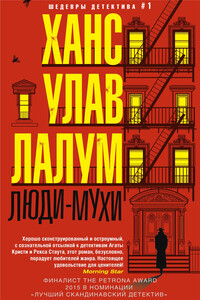
Убит бывший лидер норвежского Сопротивления и бывший член кабинета министров Харальд Олесен. Его тело обнаружено в запертой квартире, следов взлома нет, орудие убийства отсутствует. На звук выстрела к двери Олесена сбежались все соседи, но никого не увидели. Инспектор уголовного розыска Колбьёрн Кристиансен считает, что убийство, скорее всего, совершил кто-то из них. Более того, он полагает, что их показания лживы.
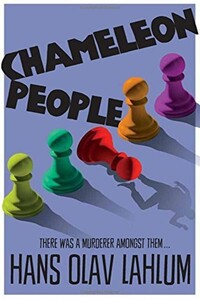
From the international bestselling author, Hans Olav Lahlum, comes Chameleon People, the fourth murder mystery in the K2 and Patricia series.1972. On a cold March morning the weekend peace is broken when a frantic young cyclist rings on Inspector Kolbjorn 'K2' Kristiansen's doorbell, desperate to speak to the detective.Compelled to help, K2 lets the boy inside, only to discover that he is being pursued by K2's colleagues in the Oslo police. A bloody knife is quickly found in the young man's pocket: a knife that matches the stab wounds of a politician murdered just a few streets away.The evidence seems clear-cut, and the arrest couldn't be easier.
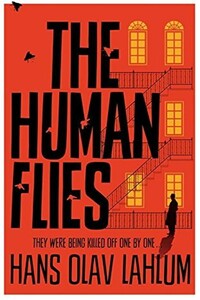
Oslo, 1968: ambitious young detective Inspector Kolbjorn Kristiansen is called to an apartment block, where a man has been found murdered. The victim, Harald Olesen, was a legendary hero of the Resistance during the Nazi occupation, and at first it is difficult to imagine who could have wanted him dead. But as Detective Inspector Kolbjorn Kristiansen (known as K2) begins to investigate, it seems clear that the murderer could only be one of Olesen's fellow tenants in the building. Soon, with the help of Patricia – a brilliant young woman confined to a wheelchair following a terrible accident – K2 will begin to untangle the web of lies surrounding Olesen's neighbors; each of whom, it seems, had their own reasons for wanting Olesen dead.
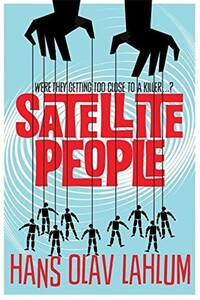
A gripping, evocative, and ingenious mystery which pays homage to Agatha Christie, Satellite People is the second Norwegian mystery in Hans Olav Lahlum's series. Oslo, 1969: When a wealthy man collapses and dies during a dinner party, Norwegian Police Inspector Kolbjorn Kristiansen, known as K2, is left shaken. For the victim, Magdalon Schelderup, a multimillionaire businessman and former resistance fighter, had contacted him only the day before, fearing for his life. It soon becomes clear that every one of Schelderup's 10 dinner guests is a suspect in the case.

В книге рассказывается история главного героя, который сталкивается с различными проблемами и препятствиями на протяжении всего своего путешествия. По пути он встречает множество второстепенных персонажей, которые играют важные роли в истории. Благодаря опыту главного героя книга исследует такие темы, как любовь, потеря, надежда и стойкость. По мере того, как главный герой преодолевает свои трудности, он усваивает ценные уроки жизни и растет как личность.
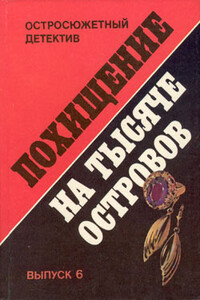
«Имя Гансйорга Мартина — драматурга, романиста, эссеиста и художника — хорошо известно в Германии и других европейских странах. На русский язык его произведения переводятся впервые. Излюбленные жанры его — детектив и триллер. Расцвет творчества Мартина падает на 60–70-е годы. Мартин — автор многих так называемых «белых» детективов. Он избегает натурализма и физиологизма в описаниях, сюжет в его произведениях, всегда острый и занимательный, развивается легко и непринужденно. Конечно, как и во всяком детективе, движущей пружиной является преступление — убийство, и чаще всего не одно.

В книге рассказывается история главного героя, который сталкивается с различными проблемами и препятствиями на протяжении всего своего путешествия. По пути он встречает множество второстепенных персонажей, которые играют важные роли в истории. Благодаря опыту главного героя книга исследует такие темы, как любовь, потеря, надежда и стойкость. По мере того, как главный герой преодолевает свои трудности, он усваивает ценные уроки жизни и растет как личность.

В книге рассказывается история главного героя, который сталкивается с различными проблемами и препятствиями на протяжении всего своего путешествия. По пути он встречает множество второстепенных персонажей, которые играют важные роли в истории. Благодаря опыту главного героя книга исследует такие темы, как любовь, потеря, надежда и стойкость. По мере того, как главный герой преодолевает свои трудности, он усваивает ценные уроки жизни и растет как личность.

В книге рассказывается история главного героя, который сталкивается с различными проблемами и препятствиями на протяжении всего своего путешествия. По пути он встречает множество второстепенных персонажей, которые играют важные роли в истории. Благодаря опыту главного героя книга исследует такие темы, как любовь, потеря, надежда и стойкость. По мере того, как главный герой преодолевает свои трудности, он усваивает ценные уроки жизни и растет как личность.

В книге рассказывается история главного героя, который сталкивается с различными проблемами и препятствиями на протяжении всего своего путешествия. По пути он встречает множество второстепенных персонажей, которые играют важные роли в истории. Благодаря опыту главного героя книга исследует такие темы, как любовь, потеря, надежда и стойкость. По мере того, как главный герой преодолевает свои трудности, он усваивает ценные уроки жизни и растет как личность.